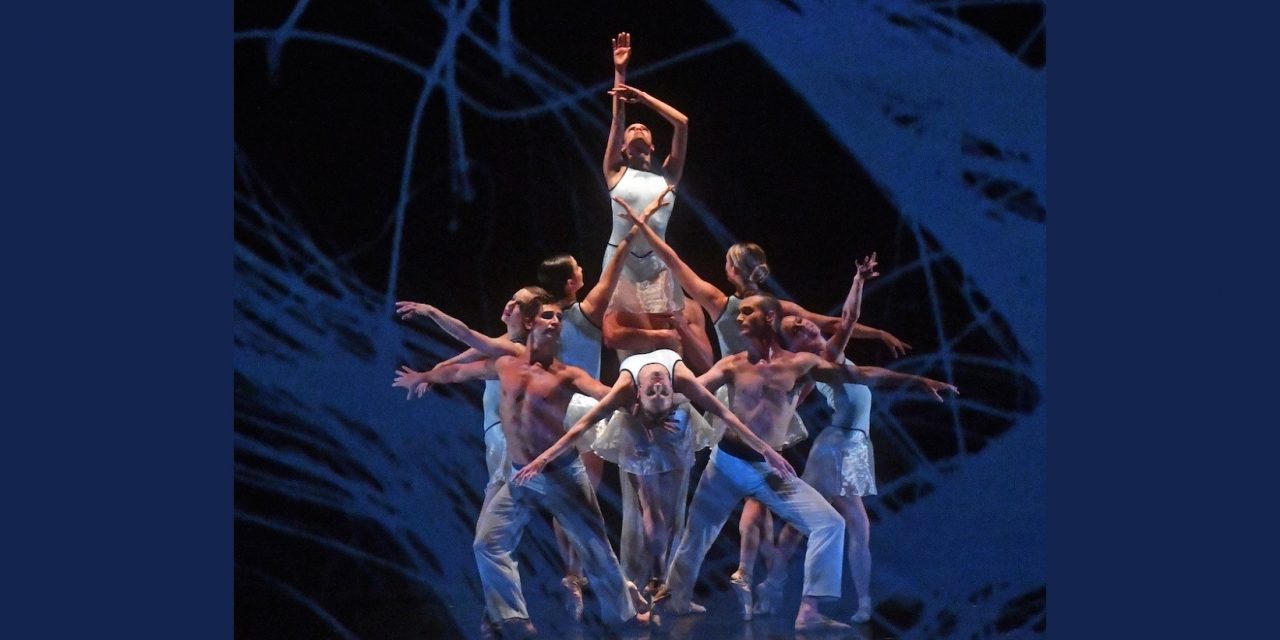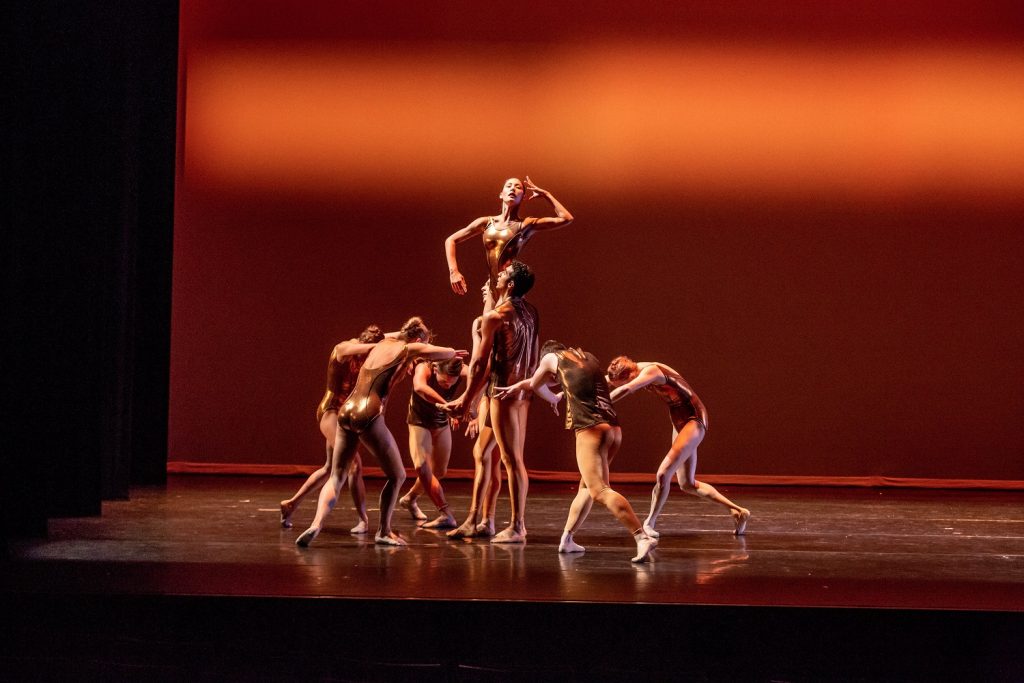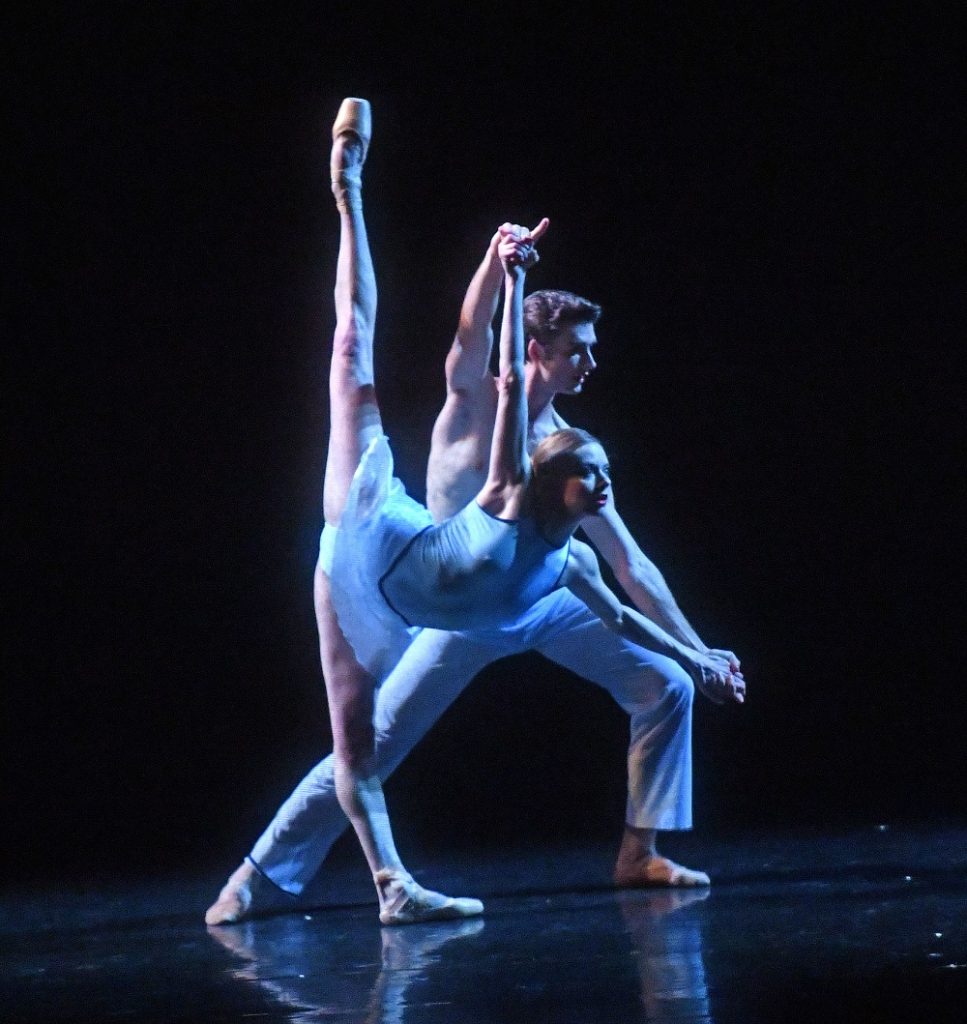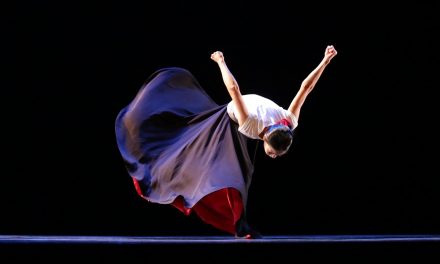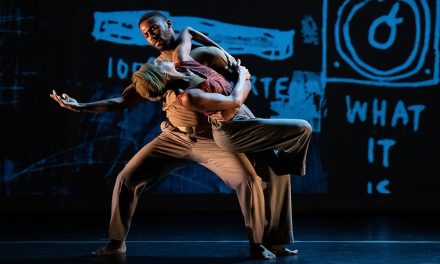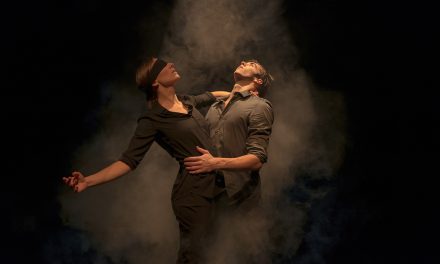Barak Ballet’s world premieres of Cypher and Desert Transport on The Broad Stage on June 24 showcased the company’s talent with elegantly executed choreography. Paired with 2017’s E/SPACE, the three pieces created a memorable evening of dance that took the audience on a journey through multiple landscapes. Each was enhanced by powerful musical compositions that encouraged climactic and transformative scenes punctuated by modern poses.
The program began with Cypher, one of artistic director Melissa Barak’s latest choreographed works, which explored cyclical group pieces and duets. Stylized as a series of vignettes, the scenes mostly focused on mirrored movements and synchronicity. The stoic dancers mostly did not make eye contact with one another, seemingly challenging their partners’ advances with quick turns that accelerated as Molly Joyce’s music built up its percussion and softened in the wake of her twinkling piano notes. Their grand battements and turns unfortunately did not always align at the peak of their pirouettes but ultimately concluded with well-timed, noiseless landings that flowed into the next portions of their routines.
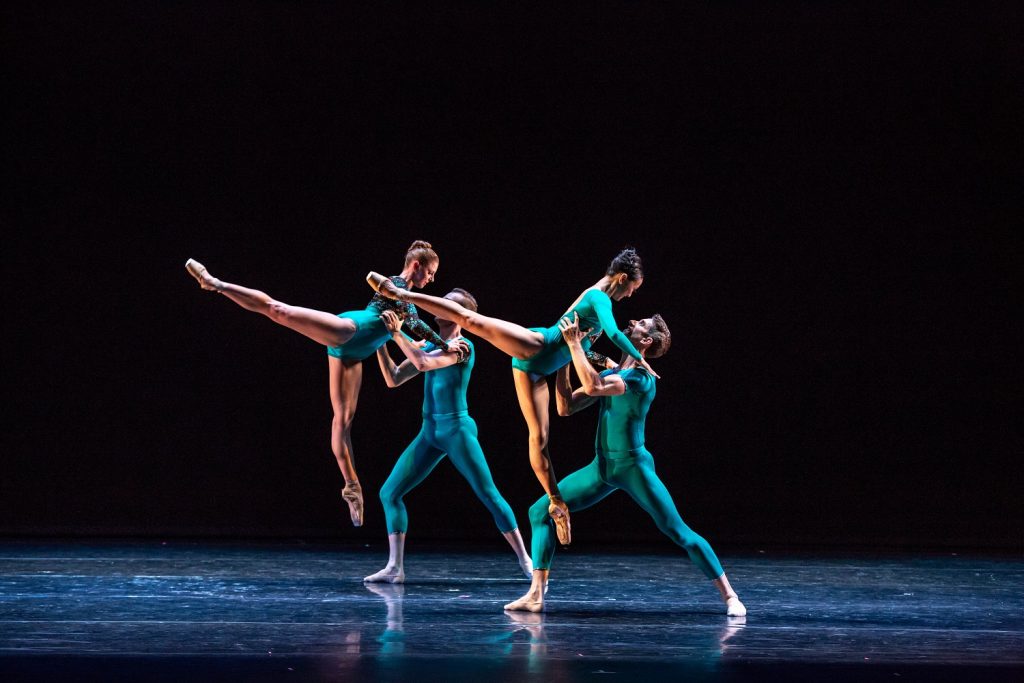
Barak Ballet -Xuan Cheng, Lauren Fadeley, Brian Simcoe, and Zachary Guthier in “Cypher” choreographed by Melissa Barak – Photo by Cheryl Mann
Dancers entered and exited the stage with short leaps, traveling toward each other on tapping tip toes that expanded into low rond de jambes or leg circles. The emphasis was mainly on their extended arms that often swung upward erratically, pausing with jutting elbows that form diamonds around their heads.
As the show went on, focus shifted to Lauren Veyette and Xuan Cheng, their solos and pas de deux with partners Zachary Guthier and Brian Simcoe evolving into more contemporary, angular moves. Cheng smooth hip and body rolls made her stick out from the rest of the ensemble. Her movements added to the choreography’s semblance of running water, further highlighted by the turquoise costumes (designed by Holly Hynes) and wavy, swimming arm motions exhibited by the performers weaving their way through the space.
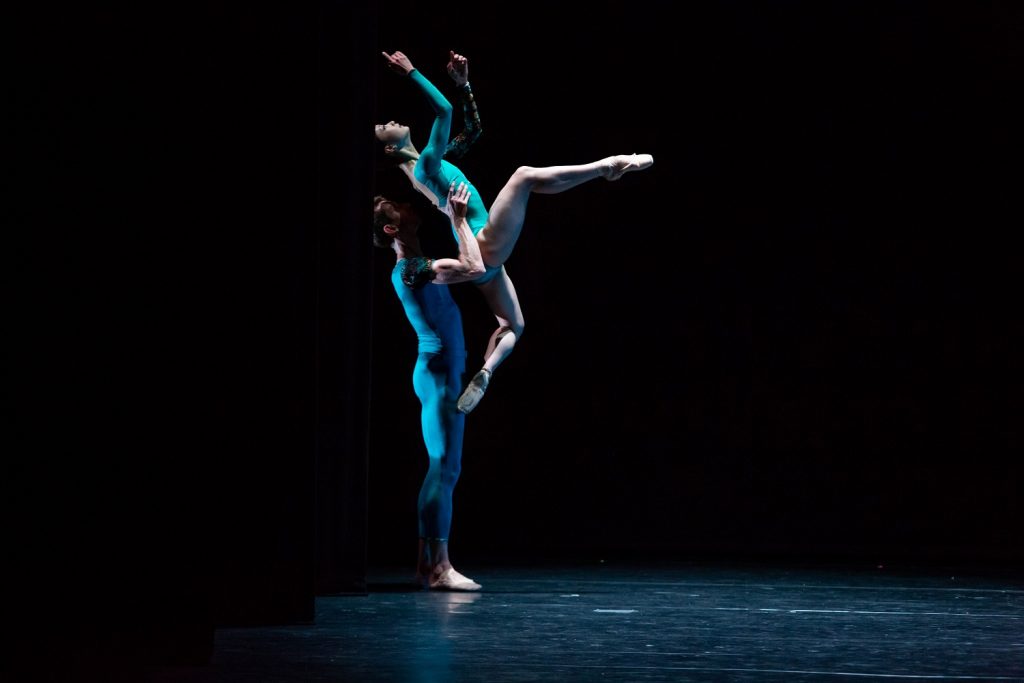
Barak Ballet – Xuan Cheng and Brian Simcoe in “Cypher” choreographed by Melissa Barak – Photo by Cheryl Mann
The abstract piece ended with all six dancers coming together center-stage to form a circle that opened up like a flower under the spotlight, their arms outstretched behind them and their bodies coming in close together.
As a direct contrast to Barak’s work, Nicolas Blanc’s choreography for Desert Transport had a stronger sense of narration which could be seen developing throughout the piece. Beginning with what sounded like Native American chants and rattling instruments, the first scene featured shiny, bronze tunic-clad dancers (costumes designed by Blanc and Ruth Fentroy) stumbling onto a stage illuminated by an orange-lit background. Their gently-placed hands on one another’s backs indicated an emotional closeness that was missing from Cypher. There was a greater sense of communal unity in their actions that shined in their tight stances and group migrations.
Kennedy Center’s first composer-in-residence Mason Bate’s music was a rhythmic clash of brass that elevated the events to that of an epic movie soundtrack. Sudden head rolls and deeply arched backs seen during lifts added drama to the dance. Nathan Scheuer’s lighting design shift from sunset oranges to clear blues and dusky purples indicated a passage of time. The concept was brought home by the eight dancers’ soldier-like column-shaped formation side-stepping across the stage with the persistence of a metronome. Their left arms pointed north as they rotated their right arms like hands on a clock, eventually lapsing into trios of spinning duets with pained expressions.
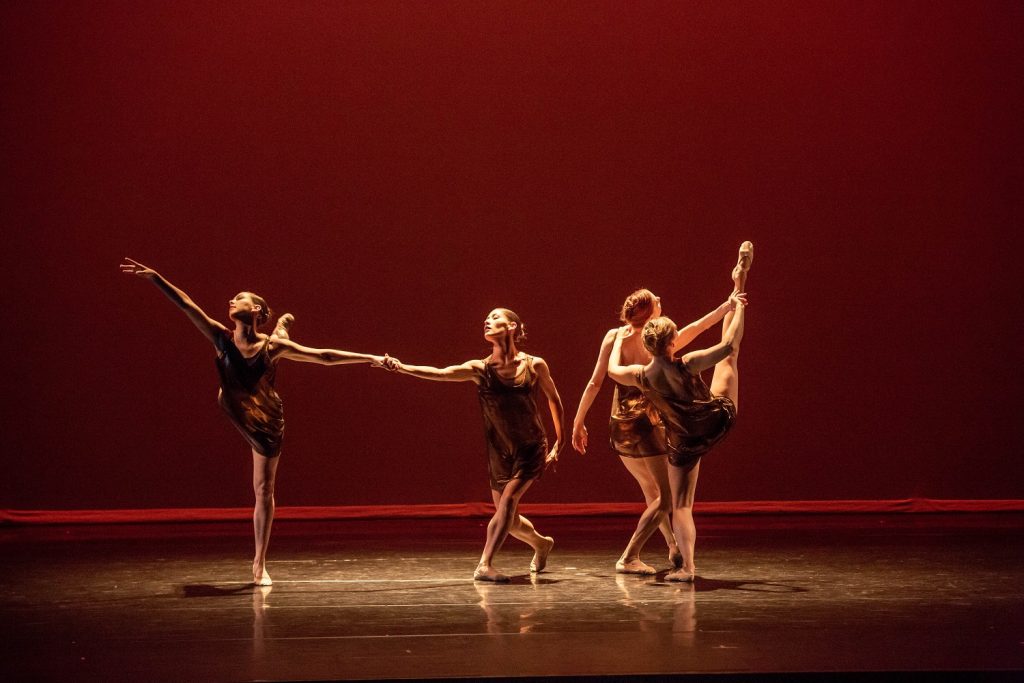
Barak Ballet – Dancers: Sadie Black, Stephanie Kim, Julia Erickson, and Hannah Wilcox in “Desert Transport” choreographed by Nicolas Blanc – Photo by Cheryl Mann
Among the most notable moments was a repeated group lift featuring a ballerina that would point outward, gliding her hand through the air and following the motion with her gaze, as though navigating their desert trek with the stars. Stephanie Kim was most frequently lifted into the air—a leader in her own right who shone in strong solos performed once her character broke away from the pack. Kim’s movements involved kneeling and searching—as she cupped her ears and swept her arms outward her companions tried calling her back to join them. She floated back and forth between them, melting into their mass, then separating herself several times before finally choosing to be on her own, ending Desert Transport on a high, empowering note.
The night concluded with E/SPACE, Barak Ballet’s 2017 premiere, and an unforgettable blend of celestial projections accompanied by swift legwork and fast-paced transitions. Melissa Barak’s work was explosively accented by David Lawrence’s static-y soundscape, which created a repetitive, uplifting beat that established an ambiance of adventure.
A spinning, tunnel-like square spiraling into a portal transported viewers to another plane of existence. Francisco Preciado’s performance became the bulk of the piece with solos that mimicked the texture formed by Refik Anadol’s media design before suddenly breaking away from it, their changes often indicating the onset of a new projection. Among the images on the translucent scrim were passing stars seen from the perspective of a spaceship passenger, foggy wisps of smoke intensifying in opacity, then thinning out into nothing, and a spinning cyclone forming a vortex. Behind it, Preciado and the rest of the ensemble would paint the lines in the following composition with their bodies. X-shaped spins widened the twister and upward jumps triggered vertical strokes that formed a grid—an image that tied in the themes of navigation found in Desert Transport and Cypher. The movements shifted between quick and sharp poses and flowy extensions as if to imitate the contradicting urgent zing and quiet calm associated with space travel.
The piece ended the way it started—back out through the tunnel and out of Barak’s world. Concluding this year’s show with last year’s premiere was indicative of E/SPACE’s overall impact—it was undoubtedly the dominant composition of the night. However, Cypher and Desert Transport establish and support Barak’s clear style, forming a promising beginning for the budding company’s trajectory as a rising force in L.A. dance.
To learn more about Barak Ballet, click here.
Feature photo by

